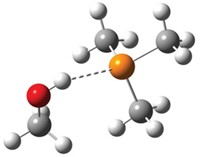Advertisement
Grab your lab coat. Let's get started
Welcome!
Welcome!
Create an account below to get 6 C&EN articles per month, receive newsletters and more - all free.
It seems this is your first time logging in online. Please enter the following information to continue.
As an ACS member you automatically get access to this site. All we need is few more details to create your reading experience.
Not you? Sign in with a different account.
Not you? Sign in with a different account.
ERROR 1
ERROR 1
ERROR 2
ERROR 2
ERROR 2
ERROR 2
ERROR 2
Password and Confirm password must match.
If you have an ACS member number, please enter it here so we can link this account to your membership. (optional)
ERROR 2
ACS values your privacy. By submitting your information, you are gaining access to C&EN and subscribing to our weekly newsletter. We use the information you provide to make your reading experience better, and we will never sell your data to third party members.
Analytical Chemistry
Isotopes Track Contaminant Breakdown
Pollutants: Degradation processes reveal themselves in nitrogen isotope ratios
by Elizabeth K. Wilson
August 4, 2011

A new study links nitrogen isotope ratios with how common environmental contaminants degrade (Environ. Sci. Technol., DOI: 10.1021/es200743t). The research augments the growing sophistication of analytic methods for tracking the fate of pollutants.
Nitrogen’s main isotope is 14N. In recent years, scientists have begun to use its rarer, stable isotope, 15N, in a method called compound specific isotope analysis (CSIA) to track degradation processes of nitrogen-containing contaminants, since various reactions enhance or deplete 15N to different degrees.
Many common environmental contaminants, such as biocides, pharmaceuticals, and triazine herbicides, begin their breakdown via oxidation of a primary aromatic amino group. However, researchers hadn’t yet explored how this important reaction affects nitrogen isotope ratios.
An international team led by environmental chemistThomas B. Hofstetter, at the Swiss Federal Institute of Aquatic Science and Technology, studied the 15N kinetic isotope effects of various components of a reaction commonly found in the environment: the oxidation of substituted anilines by manganese oxide.
Using CSIA, the researchers were able to detect small changes in 15N/14N ratios in the reactants, and found that these ratios themselves changed depending on the pH of the reaction conditions. They bolstered their results with theoretical calculations. These changes in isotope ratios could then help scientists deduce the processes that have occurred in the environment, the researchers write, and the reactants’ sources and quantities.
Christopher M. Reddy, a geochemist at Woods Hole Oceanographic Institution, who has worked with Hofstetter in the past, calls the paper “outstanding,” noting that the authors not only measured the isotope ratios but were able to explain why these effects occur.
The authors suggest doing similar studies on other important reactions of pollutants, such as oxidative N-dealkylations and nucleophilic additions.



Join the conversation
Contact the reporter
Submit a Letter to the Editor for publication
Engage with us on Twitter